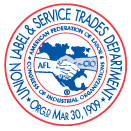In October 2011 the AFL-CIO, led by Secretary –Treasurer Liz Shuler, hosted its first Next Up Young Workers Summit. The Minneapolis conference was held to reach out to working people under the age of 35 because the consensus is that the current crop of union members are aging out of the workforce.
Though workers age 16 to 24 represent only 13.5 of the workforce, they account for about 26 percent of all unemployment. More than one-third of young workers are uninsured, much higher than a decade ago. Workers
ages 18-35 constitute 36 percent of the U.S. workforce but account for just a quarter of union membership. Studies indicate that about 19 percent of workers ages 16 to 24 are unemployed.
For the Generation X and Y workers life since the Great Recession has been difficult. Young workers face high unemployment, tiered pay scales, poor working conditions, lack of job security and benefits.
Referred to as “Generation Debt” by a 2010 Cornell University study “Youth and Unions” author Marlena Fontes points out that almost two-thirds of college students are taking out loans to pay for college and, as of 2005, the
average debt for students who have just graduated is between $17,600 and $23,485. Tuition has
risen two to three times faster than inflation and more students are hiking up debt on credit cards to pay for college and other expenses. Exiting college and moving into the workforce they are already bogged down with debt.
Beyond debt, these younger workers are entering into a post-industrial American economy.
Because of offshoring, the popularity of hiring temporary workers, and the use of freelancers and contractors, young workers find themselves overwhelmingly unemployed or underemployed in every sector.
Union membership does makes a difference. Unionized workers ages 18-29 earn, on average, 12.4 percent more than their non-union counterparts. Since the AFL-CIO launched its initiative, affiliated unions have followed the AFL-CIO’s lead and created young workers’ groups within their own organizations to help build their organizations.
Organizations like the Oregon AFLCIO’s “Young Emerging Labor Leaders” (YELL), AFSCME’s Next Wave, AFGE’s “Young Organizing Unionists for the Next Generation” (YOUNG), CWA’s “Next Generation Network,” and “Baltimore’s Young Trade Unionists” are just a few of the groups that will mold the next generation of union activists.
“We can’t let the labor movement die of old age. It is imperative that we educate, involve, energize and encourage the next generation of trade unionists to rebuild the middle class,” said Union Label Department President Rich Kline.




